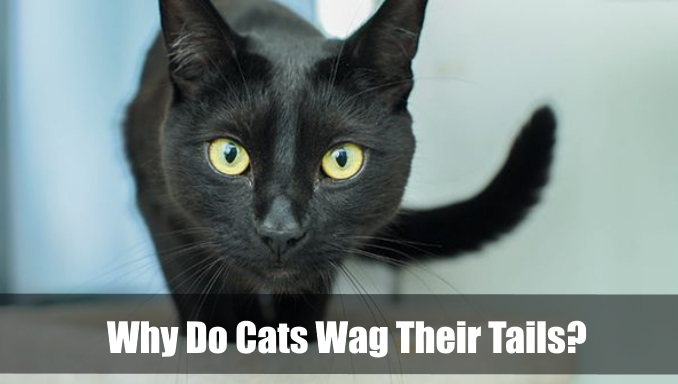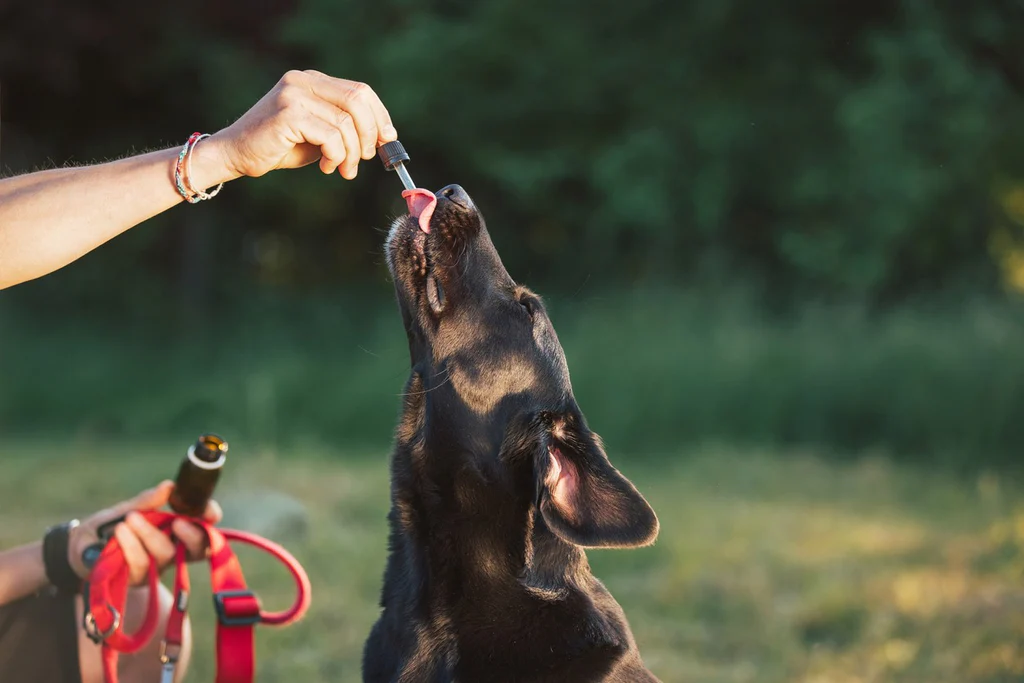Why Do Cats Wag Their Tails?
Have you ever noticed your cat’s tail? Do they wag it like dogs would when they’re happy, or do cats wag their tails differently? It turns out that cats’ tails are as varied in communication as any other part of the body!
In this blog post, we will unravel the mystery behind why do cats wag their tails so that you can become an even better pet parent.

Understanding cats’ tail behavior is just one more way to understand their needs and anticipate what might happen next. Whether it’s an aggressive warning to another animal or simply playing around with a string toy, knowing why your cat does different behaviors can help you appreciate her unique quirks —and be better at caring for her overall.
If you’re like most cat owners, chances are that when you look into your cat’s deep, mysterious eyes, one of the first things to strike you is their wiggling tails. While cats may appear to be blasé about everything going on around them at times, those little bits of motion can tell us a lot more than we might expect! So why do cats wag their tails?
To answer this question and help unravel some feline mysteries, let’s delve deeper into the world of kitty tails – from the reasons behind their movements to what they could be trying to communicate.
What Do Cats Use Their Tails for?
Cats use their tails for a variety of purposes. They are an important part of a cat’s communication system, helping to express emotions such as aggression and joy. Cats also use their tails to keep balance when jumping and running, as well as providing extra traction when climbing trees or other structures. Lastly, cats wrap their tail around themselves while sleeping, which is believed to provide warmth and comfort.
Overall, cats rely on their tails as an integral part of their behavior and survival in the wild. With its wide range of uses and functions, it’s no wonder cats are so fond of theirs!
Why Do Cats Wag Their Tails?
When a cat wags its tail, it can be a sign of several different things. Generally, it’s an indication that your pet is feeling happy or curious, but the behavior can also signify aggression or discomfort in some cases. Cats use their tails to communicate with humans and other animals to express themselves and assess their environment.
When a cat’s tail is held high and moving in an even, up-and-down motion, it’s generally a sign of contentment. This may be accompanied by purring or kneading behavior. If the movement is faster and more erratic, it could indicate confusion or excitement. In the presence of other cats, wagging tails can also be a sign of friendliness or submission.
When the tail is held lower and moves from side to side, it’s usually an aggressive signal. This is typically seen when cats are feeling threatened by another animal or person, and the behavior may be accompanied by hissing or growling. If your cat’s tail is tucked between its legs, it is likely a sign of fear or discomfort.
In addition to tail movements, other body language cues can help you figure out your cat’s state of mind. If the ears are pointed forward and the eyes are wide open, your pet may be feeling playful or curious. On the other hand, if the ears are flat and the eyes are narrowed, your cat is likely feeling angry or aggressive.
By paying attention to the way your cat’s tail moves and observing other body language cues, you can better understand what your pet is trying to communicate. Being able to recognize and interpret these signals can help ensure that both you and your feline friend have a positive relationship.
Other Kinds of Tail Movements Do Cats Make & What Does It Mean
When cats wag their tails, it is typically a sign of excitement or anticipation. However, there are many other tail movements that cats make to convey different messages and emotions. Here are some common ones:
• Twitching or shaking — A quick twitch of the tail usually indicates agitation or aggression. You may see this when your cat is stalking prey or when they see another animal outdoors.
• Swishing back and forth — This movement indicates curiosity or alertness. Your cat may be looking at something interesting or trying to figure out what’s going on.
• Bristling — If your cat’s tail is poofy and stiff, it’s a sign that they are feeling threatened or scared.
• Flipping their tail — This is a sign of frustration and it typically comes with an angry meow. Your cat may do this if they want you to put something out of reach or if they’re trying to get your attention.
• Wrapping their tail around your legs — This is a sign of affection, and it typically happens when your cat wants to cuddle with you or feel reassured.
In summary, cats wag their tails for many different reasons. It can be a sign of excitement, aggression, curiosity, or even just trying to get your attention! Learning to recognize the different tail movements can help you better understand your cat’s feelings and behaviors, so you can be a better pet parent.
So next time you see your kitty wagging their tail, take some time to observe their body language —you might be surprised by what it’s trying to tell you!
Do All Cats Wag Their Tails?
Not all cats will wag their tails due to differences in personality and behavior. Some cats may have a naturally relaxed tail, while others may be more active with it or keep it tucked away most of the time. If your cat does not wag his or her tail as much as other cats do, it is likely nothing to worry about.
However, if you notice your cat’s tail moving differently than usual or if he or she is holding the tail still while in a stressful situation, it could be a sign of an underlying problem. Be sure to consult with your veterinarian if this behavior persists so that they can check for any medical issues that might be causing it.
How to Tell If a Cat’s Tail Is Sore or Broken?
If you suspect that your cat’s tail may be sore or broken, it is important to take them to the vet as soon as possible for a proper diagnosis and treatment. In the meantime, there are some signs you can look out for that could indicate a sore or broken tail:
1) Swelling – If your cat’s tail swells up significantly, this could be an indication that it is sore or broken.
2) Unusual Movement – Pay close attention to your cat’s tail movement. If its movements are limited, jerky, or intermittent, this could be a sign of pain and/or injury.
3) Restlessness – If your cat is acting more restless than usual, this could be a sign of pain coming from their tail.
4) Loss of Appetite – If your cat’s appetite has decreased or they appear less interested in food, this could be a symptom of soreness or injury in their tail.
5) Discoloration – Look for any discoloration at the base of the tail. If the area appears bruised or swollen, this could be a sign of injury.
If you think your cat may have a sore or broken tail, make sure to visit your vet as soon as possible for proper diagnosis and treatment. Your vet will likely perform an examination and possibly X-rays in order to make a proper diagnosis. They can then provide you with the best treatment options for your pet’s condition.
https://www.youtube.com/watch?v=oUID7cpGvqs
FAQs Related to Why Do Cats Wag Their Tails
Why do cats wag their tails while lying down?
Cats wag their tails while lying down for a variety of reasons, including to show pleasure or contentment. It is also believed that cats may use tail-wagging as a way to regulate their temperature when they are feeling too hot. A slow, lazy wag can indicate relaxation and comfort in the company of a trusted person or animal. It may also be a sign that the cat is feeling safe and secure in its surroundings.
Cats will sometimes wag their tails when they are excited or happy, and this can be accompanied by purring or meowing. Tail-wagging can even indicate annoyance or displeasure, so it’s important to pay attention to your cat’s body language and the context of its tail-wagging to better understand how it is feeling.
Cats may also wag their tails when they spot a potential prey or if they are feeling threatened, so it’s important to look out for other signs that can help you determine why your cat is wagging its tail while lying down.
Why does my cat gently bite me?
Your cat’s gentle bites, or “love bites” as they’re often called, are a sign of affection. While some cats may do this out of excitement or playfulness, it can also mean that your cat is trying to show you love and trust. Cats typically reserve this behavior for their closest companions, so if your cat is biting you gently or nibbling on your skin, it’s a good sign that he trusts and loves you.
However, if your cat starts to bite more aggressively or does not stop when asked, this could be a sign of frustration, fear, or insecurity.
Is it OK to let your cat play bite you?
It is generally not recommended to let your cat play bite you. While this behavior can be cute and playful, it can also lead to potential injury if the biting becomes too hard or aggressive.
If your cat starts biting too hard, it could be a sign of aggression or frustration. It is important to remember that cats are predators and their bites can be painful, so it is best to redirect this behavior by providing your cat with chew toys or interactive play activities.
Encouraging positive behavior through rewards such as treats and praise can also help to deter aggressive biting. If the problem persists, it is best to consult with a veterinarian or animal behavior specialist for advice on how to manage your cat’s biting behavior.
Why do cats wag their tails when you talk to them?
Cats wag their tails when you talk to them as a way of showing interest, approval, and contentment. It is believed that cats use tail-wagging as a form of communication to show happiness or trust in the presence of another person or animal. A slow, gentle wag can often indicate relaxation and comfort in the company of a trusted person or pet.
It is also possible that cats may wag their tails when they are feeling excited or happy, and this behavior can often be accompanied by purring or meowing. Pay attention to your cat’s body language when it starts to wag its tail, as this can help you better understand why it is doing so. If your cat’s tail is wagging rapidly or frequently, it may be a sign of annoyance or displeasure, so it is important to try and gauge the context of its behavior.
Conclusion
In conclusion, the answer to “why do cats wag their tails?” is not a simple one. cats wag their tails for a variety of reasons. Cats may wag their tail when they are content and feeling happy, when they are scared or startled, or to communicate with other cats.
It is important to pay attention to your cat’s body language as it can help you better understand why your pet is behaving the way it does. Knowing the reasons why cats wag their tails can help you provide your pet with a safe and happy environment. So next time you’re wondering why your cat is wagging its tail, take a closer look to see what might be causing this behavior.
We hope this post helps to answer your question about why do cats wag their tails. If you have any other questions or would like more information, please contact a certified veterinarian for help and advice. Thanks for reading!








